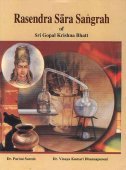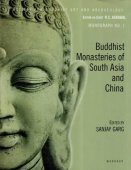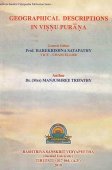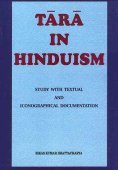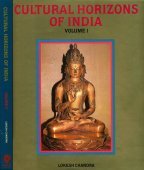Vish, Viś, Viṣ: 17 definitions
Introduction:
Vish means something in Buddhism, Pali, Hinduism, Sanskrit, Hindi. If you want to know the exact meaning, history, etymology or English translation of this term then check out the descriptions on this page. Add your comment or reference to a book if you want to contribute to this summary article.
Vish has 17 English definitions available.
The Sanskrit terms Viś and Viṣ can be transliterated into English as Vis or Vish, using the IAST transliteration scheme (?).
Languages of India and abroad
Sanskrit dictionary
[Deutsch Wörterbuch]
Source: Cologne Digital Sanskrit Dictionaries: Böhtlingk and Roth Grosses Petersburger WörterbuchViś (विश्):—
--- OR ---
Viś (विश्):—
--- OR ---
Viś (विश्):—3. f. fehlerhaft für viṣ faeces [Hemacandra’s Abhidhānacintāmaṇi 634,] [Scholiast] [Weber’s Verzeichniss 278,] [Śloka 42.]
--- OR ---
Viṣ (विष्):—
--- OR ---
Viṣ (विष्):—2. (= 1. viṣ)
1) adj. aufzehrend in jaradviṣ Dürres aufzehrend. —
2) f. = vyāpana [Medinīkoṣa ṣ. 24.]
--- OR ---
Viṣ (विष्):—3. (nom. viṭ) f. [Siddhāntakaumudī.247,b,2 v. u.] faeces [Amarakoṣa 2, 6, 2, 19. 3, 4, 26, 199.] [Hemacandra’s Abhidhānacintāmaṇi 634.] [Medinīkoṣa ṣ. 24.] [Halāyudha 3, 15.] [Suśruta 1, 107, 18. 2, 109, 1.] viṇmūtra (s. auch bes.) [1, 45, 15. 49, 21.] [Yājñavalkya’s Gesetzbuch 1, 152.] [Bhāgavatapurāṇa 5, 26, 22. 6, 18, 24. 7, 14, 13.] mūtraviṭ [Manu’s Gesetzbuch 5, 135.] viṇmadhye [Varāhamihira’s Bṛhajjātaka 25 (23), 8.] [Weber’s Verzeichniss No. 929,] [Śloka 42] (fälschlich viśi) . — Vgl. viṭka, viṭkārikā, viṭkhadira, viṭcara, viṭśūla, viṭsaṅga, viṭsārikā, viṭsārī, viḍgandha, viḍgraha, viḍghāta, viḍja, viḍbandha, viḍbhaṅga, viḍbhuj (auch [Bhāgavatapurāṇa 5, 5, 1]), viḍbheda, viḍbhedin, viḍbhojin, viḍlavaṇa, viḍvarāha (auch [Bhāgavatapurāṇa 2, 3, 19]), viṇmūtra, karṇa, go, dhātu, netra, baddha und viṣṭhā .
--- OR ---
Viṣ (विष्):—4. , veṣati (secane) [DHĀTUP. 17, 47.]
--- OR ---
Viṣ (विष्):—5. , viṣṇāti (viprayoge) [DHĀTUP. 31, 54.]
--- OR ---
Viś (विश्):—1. mit upa euphem. für cacare [CARAKA 3, 5.] — abhini
1) eintreten so v. a. zur Geltung kommen: pūrvaṃ hyapavādā abhiniviśante paścādutsargāḥ [Patañjali] [?a. a. O.2,390,a.] —
3) b) sadānabhiniviṣṭaḥ niemals auf seinen Kopf bestehend [Hemacandra] [Yogaśāstra 1, 52.] — nis desid. eine gemeinsame Wohnung beziehen wollen: yogināṃ prāvṛṣi nirvivikṣatām [Bhāgavatapurāṇa 1, 5, 23.] — abhipra, partic. viṣṭa hereingetreten im Gegens. zu abhiniḥsṛta [Patañjali] [?a. a. O.4,81,b.] — sam
1) mit instr. [Ṛgveda 10, 56, 1.] —
2) [Ṛgveda 10, 55, 2.]
--- OR ---
Viṣ (विष्):—
Sanskrit, also spelled संस्कृतम् (saṃskṛtam), is an ancient language of India commonly seen as the grandmother of the Indo-European language family (even English!). Closely allied with Prakrit and Pali, Sanskrit is more exhaustive in both grammar and terms and has the most extensive collection of literature in the world, greatly surpassing its sister-languages Greek and Latin.
See also (Relevant definitions)
Starts with (+3041): Vidbhanga, Vidbhuj, Vigaujas, Vikcakadrakarsha, Vikpapya, Vikpati, Visa-munkil, Visada, Visahana, Visahara, Visahata, Visaja, Visakalita, Visakantaka, Visamayati, Visamutti, Visanapi, Visanka, Visankita, Visapita.
Ends with (+132): Abhinivish, Abhipravish, Abhisamvish, Abhivish, Abhyavish, Abhyupavish, Acaladvish, Acalatvish, Achaladvish, Achalatvish, Adhivish, Adridvish, Agnivish, Ahidvish, Ahimatvish, Ahividvish, Amaradvish, Anarvish, Anritadvish, Anudvish.
Full-text (+775): Visha, Vishta, Parivishta, Govish, Netravish, Karnavish, Vikpati, Vesha, Vitkula, Jaradvish, Vitshula, Avesha, Paryupaveshana, Samvesha, Anuveshana, Vidvaraha, Vishampa, Parivesaka, Upavish, Anuvesha.
Relevant text
Search found 94 books and stories containing Vish, Vi-iṣ, Vi-is, Vi-īṣ, Vi-ish, Viś, Vis, Viṣ, Vīṣ; (plurals include: Vishes, iṣs, ises, īṣs, ishes, Viśs, Vises, Viṣs, Vīṣs). You can also click to the full overview containing English textual excerpts. Below are direct links for the most relevant articles:
The Matsya Purana (critical study) (by Kushal Kalita)
Part 1 - Vaiṣṇavism: The Viṣṇu-cult < [Chapter 4 - Religious aspects of the Matsyapurāṇa]
The Markandeya Purana (Study) (by Chandamita Bhattacharya)
Division of Varṇa (c): The Vaiśyas < [Chapter 2]
4. Worship and Mythology of Viṣṇu < [Chapter 3]
Maha Prajnaparamita Sastra (by Gelongma Karma Migme Chödrön)
I. Position of the recollections in the prajñāpāramitā < [Part 1 - Position and results of the recollections]
V. The concept of revulsion toward food (āhāre pratikūla-saṃjñā) < [Chapter XXXVII - The Ten Concepts]
II. How to meditate on the nine notions (navasaṃjñā) < [Part 1 - The nine notions according to the Abhidharma]
Rig Veda (translation and commentary) (by H. H. Wilson)
Vedic influence on the Sun-worship in the Puranas (by Goswami Mitali)
Part 7 - The Depiction of Sūrya in the Anthropomorphic Form < [Chapter 4 - Vedic Influence on the Sun-Worship in the Purāṇas]
Part 3 - Sūrya, the Creator, the Preserver and the Destroyer < [Chapter 4 - Vedic Influence on the Sun-Worship in the Purāṇas]
Part 20 - Viṣṇu (the Deity with Three Strides) < [Chapter 2 - Salient Traits of the Solar Divinities in the Veda]
Satapatha-brahmana (by Julius Eggeling)
Kāṇḍa I, adhyāya 3, brāhmaṇa 4 < [First Kāṇḍa]
Kāṇḍa II, adhyāya 4, brāhmaṇa 3 < [Second Kāṇḍa]
Kāṇḍa II, adhyāya 1, brāhmaṇa 3 < [Second Kāṇḍa]
Related products
